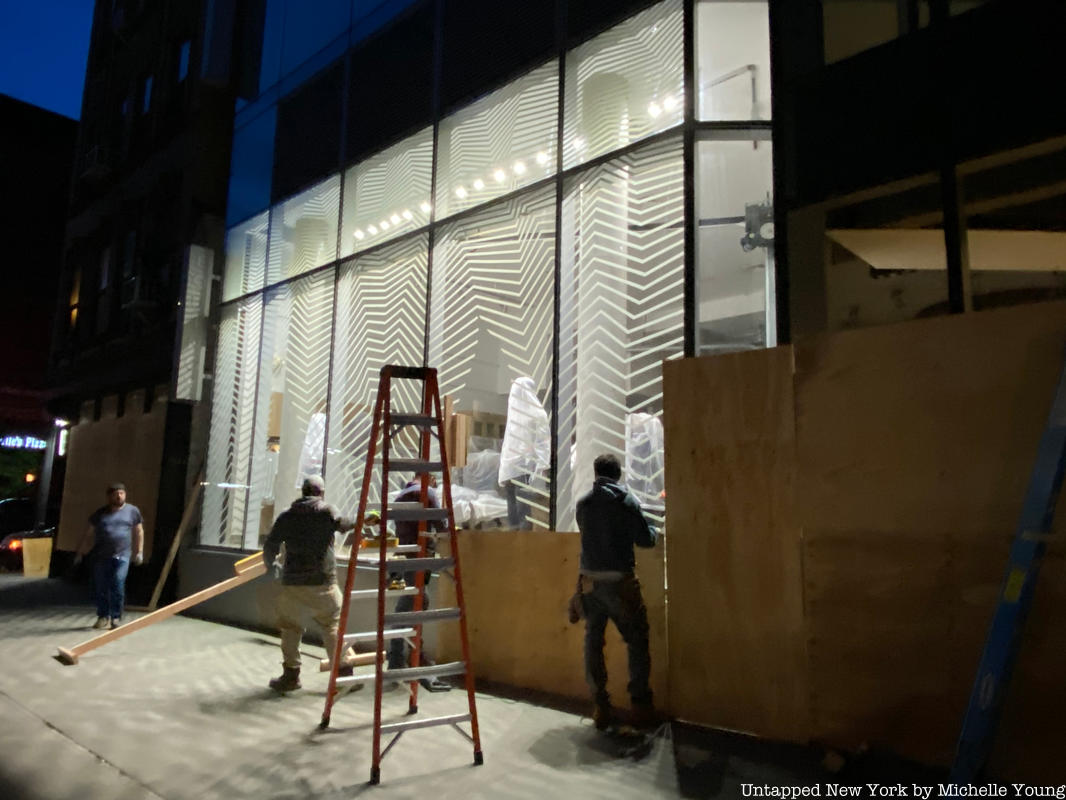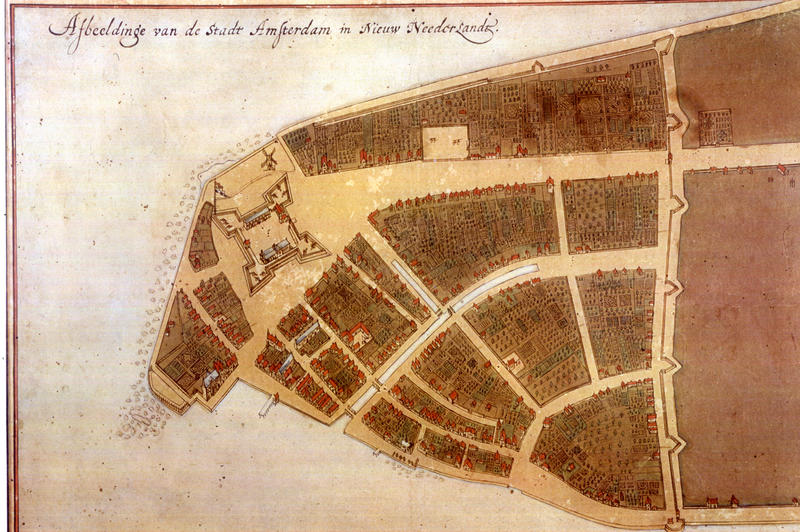 Equinox in Chelsea Market rushing to board up before nightfall, June 1st, 2020.
Equinox in Chelsea Market rushing to board up before nightfall, June 1st, 2020.
Yesterday, Governor Andrew M. Cuomo and Mayor Bill de Blasio announced a citywide curfew in New York City from 11 PM to 5 AM this morning. The effect of the curfew seems to have been middling. Mayor Bill de Blasio tweeted over the course of last night that things were calm at Barclays Center, but there was damage and disturbance in Midtown and the Bronx. Today, de Blasio has extended the curfew for the rest of the week from 8 PM to 5 AM.
Curfews have occurred before in New York City, albeit very rarely. Many of the city’s curfews have lasted only a few days, and a number during major conflicts have received little media coverage in the past. But perhaps it may be surprising to learn that curfews have been implemented in New York City, even since the 1600s.
Curfews in Dutch New Amsterdam (1600s)
 The original Castello Plan drafted in 1600 of Dutch New Amsterdam was found in the Villa de Castello in 1900 and was eventually donated to New York Public Library. Image via Wikipedia Commons.
The original Castello Plan drafted in 1600 of Dutch New Amsterdam was found in the Villa de Castello in 1900 and was eventually donated to New York Public Library. Image via Wikipedia Commons.
Perhaps the earliest curfew in New York City occurred right after Dutch arrived, as nightfall brought disturbances to New Amsterdam like “drinking songs and angry curses,” according to Russell Shorto in The Island At The Center Of The World. In 1638, Peter Minuit released a series of scolding decrees that banned seafaring people to remain on shore after sunset without permission and prohibited people from selling wine at night, essentially a series of curfews.
When Peter Stuyvesant came to power as the Director General, he was met with much hate and aggression by many New Yorkers, which led him to establish a curfew “forbidding tavernkeepers from selling liquor on Sunday (until two in the afternoon).” These curfews would set a precedent for centuries to come in New York, as authority figures would often implement temporary curfews to stem anticipated violence or community disturbance.





